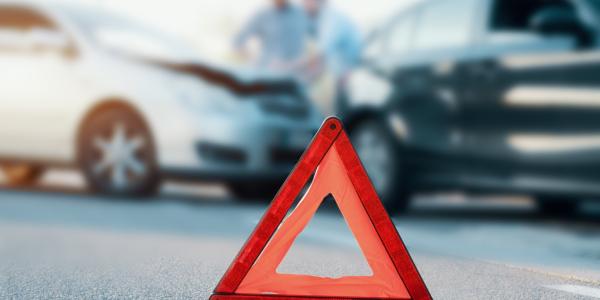Frustration, anger, and impatience may be the most dangerous "drugs" on the highway. Learn what the symptoms of road rage are and how to avoid aggressive driving behaviors and road rage incidents.
Before you get started
The National Highway Traffic Safety Administration defines road rage as:
"An assault with a motor vehicle or other dangerous weapon by the operator or passenger(s) of one motor vehicle on the operator or passenger(s) of another motor vehicle caused by an incident that occurred on a roadway."
Road rage is a common but dangerous pattern of driving behaviors that most of us have experienced and witnessed. Many things can contribute to road rage include:
- Stress
- Traffic
- Tight schedules
- Anger
- Frustration
Road rage increases incidents of tailgating, belligerent vehicle movements, and acts of violence such as assault or even murder.
Aggressive driving
The situations below are considered aggressive driving:
- Committing 2 or more moving violations that are likely to endanger other people or property.
- Committing 1 intentional violation that requires a defensive reaction from another driver.
Symptoms of road rage
- Having thoughts of strong disapproval or violence toward other drivers.
- Verbally disapproving of other drivers to passengers in your vehicle.
- Not obeying traffic safety laws because you don't agree with them.
- Following too close.
- Speeding.
- Weaving in and out of traffic.
- Speeding up to beat a traffic light.
- Cutting between vehicles to change lanes.
- Using your car horn excessively.
- Flashing headlights excessively at oncoming traffic.
- Braking to get others to back off your bumper.
- Passing traffic and then slowing down to teach the other driver a lesson.
How to avoid aggressive driving and road rage incidents
Reduce stress
- Allow plenty of time for the trip.
- Listen to soothing music.
- Improve the comfort inside your vehicle.
Be mindful
- Understand that you can't control the traffic, only your reaction to it.
- Put yourself in the other driver's shoes. They may be driving that way because of an emergency.
- Signal when turning or changing lanes.
Give yourself space
- If another driver challenges you, take a deep breath and move out of the way.
- Make sure you have enough room when entering traffic or changing lanes.
- Keep a safe following distance between your vehicle and the one in front of you.
Avoid escalation
- Don't make aggressive hand gestures to other drivers if they offend you with their driving.
- Avoid prolonged eye contact with the other driver.
- Control your anger. Remember it takes 2 to start a fight.
- Get help by calling the police on your cell phone or going to a public telephone. Don't pull to the side of the road.
Reporting aggressive driving to the police
Visit the Washington State Patrol website for instructions on how to report aggressive driving to the police.




